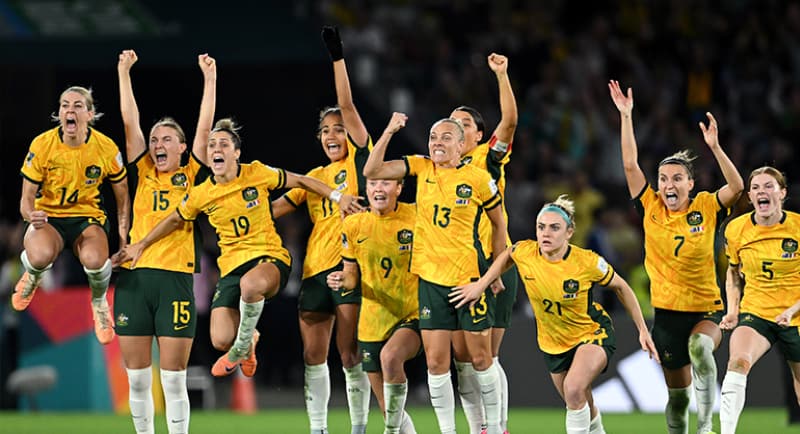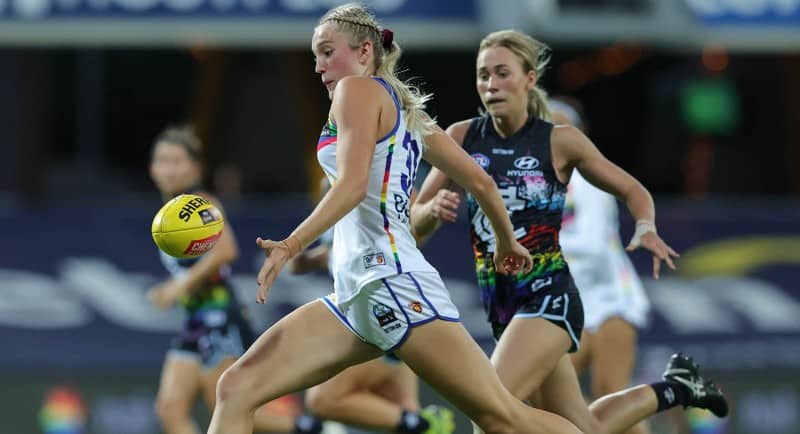In the year the Matildas smashed Australian broadcast viewing records, there has been no bigger topic than the rise of women’s sports in Australia.
Many experts have predicted a halo effect from the Matilda’s phenomenal success’ to impact audiences across the other women’s sports, including AFLW, NRLW, BBLW, and A-League Women.
Mediaweek spoke with Fox Sports executive producer Joe Bromham, and Kayo executive director Cate Hefele about the explosion of women’s sport and what to expect in 2024.
Just like the men’s
One of the key criticisms often levelled at women’s sports is the idea that it is somehow inferior to the men’s game; however, it’s not just about giving women’s sports equal billing; it’s important to understand what the audience wants, said Hefele.
“A great example is the AFLW; they’re going through a bit of a rebrand for the coming year. What is that brand? What’s it going to look like on Kayo? How do we make it look and feel different so that it’s not just AFL that happens to be played by women?
“We see different consumer behaviour when we look at women’s sport. Netball used to be played during the day on a Saturday, and a big shift we made was moving those games into prime time when we could get that big viewership. We work a lot with the codes about the nuance of each of the different fan bases.”

The Matildas
Bromham agrees, “The last thing you would want is a copy-paste for the men’s” when it comes to broadcasting women’s sports. The key difference, he said, comes down to storytelling.
“Traditionally, in men’s sports, the athletes have not been encouraged to tell their stories – women’s sport has an excellent opportunity to be the complete opposite. We need to encourage our women’s athletes to tell their stories – no matter how trivial they think it is, everyone has a story and people are interested in other humans. If you’re there to watch the sport, if you’re there to watch them play, then naturally you’re going to be interested in their backstory,” said Bromham.
Elevating women’s sports
Storytelling isn’t just about putting the lives of the athletes out there for fun – Bromham believes it is the crucial connection that elevates women’s sports from a broadcast point of view.
“Storytelling is the secret sauce in getting people connected and committed to watching sports. If you can have your viewers feel some empathy for the athletes and their backstory, then that is how you engage them,” said Bromham.
“There are two types of storytelling: there’s emotional storytelling and technical storytelling. Both hold their purpose, but I think emotional storytelling is really important in engaging people initially and getting them committed to a sport. Then technical storytelling, once they’re committed, keeps them there and makes them an expert and a super fan.”

AFLW
2024 and beyond
Looking ahead to 2024, Hefele said the biggest hurdle for broadcasters will be walking the line “between pushing it hard, but also making it feel like we should be watching games and attending in person.”
“To me, it goes back to normalising women’s sport,” said Hefele. “All the work that the codes are doing to invest in growing the game helps us as broadcasters. Next year will have continued connections between the codes and the broadcasters, and for me, it will be about finding all those stories and really drawing them out.”
Bromham said, “What we need to do to continue to grow is continue to have the sports successful at a commercial level. That can feed down the chain to the athletes, so the athletes can become full-time – too many of our women athletes aren’t full-time. 2024 will see continued growth in revenue and commercial growth for these sports to trickle down and fund that.”
See also: Mediaweek’s A to Z of 2023: W is for Women
–
Top Image: Joe Bromham and Cate Hefele
